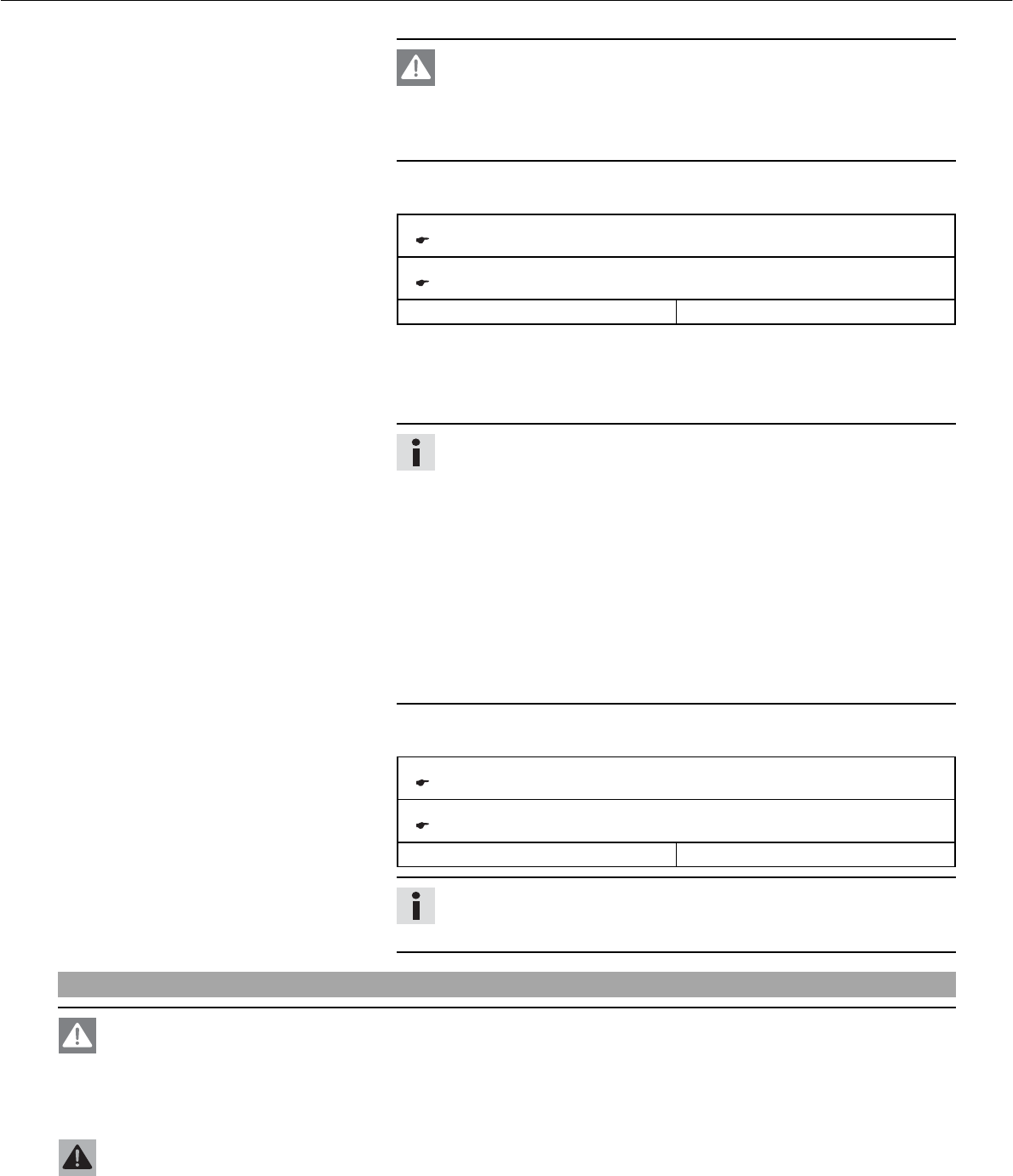
MAINTENANCE WORK ON CHASSIS AND ENGINE 78
Danger
Danger of poisoningಘExhaust gases are poisonous and can result in uncon-
sciousness and/or death.
ದ When running the engine, always make sure there is sufficient ventila-
tion, and do not start or run the engine in a closed space.
ದ Adjust the idle speed with the adjusting screwb
.
Specification
Choke function deactivated ದbThe choke lever is pushed in to the stop.
( P. 21)
Choke function deactivated ದbThe choke lever is pushed back to the stop.
( P. 21)
Idle speed 1550… 1650brpm
ದ Turn the idle adjusting screwb
slowly until the idle speed begins to fall.
ದ Note the position and turn the idle adjusting screw slowly counterclockwise until
the idle speed falls.
ದ Adjust to the point between these two positions with the highest idle speed.
Info
If there is a big engine speed rise, reduce the idle speed to a normal level
and repeat the above steps.
The extremely sporty rider will set the mixture about 1/4 of a turn back from
this ideal value (leaner, in a clockwise direction) since the engine becomes
hotter in sporting use.
If the procedure described here does not lead to satisfactory results, the
cause may be a wrongly dimensioned idling jet.
If you can turn the idle adjusting screw to the end without any change of
engine speed, you have to fit a smaller idling jet.
The idle adjusting screw must not be opened more than two turns. If more
than two turns are necessary (rich mixture), use a larger idling jet.
After changing the idling jet, start from the beginning with the adjusting
steps.
ದ Adjust the idle speed with the adjusting screwb
.
Specification
Choke function deactivated ದbThe choke lever is pushed in to the stop.
( P. 21)
Choke function deactivated ದbThe choke lever is pushed back to the stop.
( P. 21)
Idle speed 1550… 1650brpm
Info
Following extreme air temperature or altitude changes, adjust the idle speed
again.
Emptying the carburetor float chamberbx
Danger
Fire hazardಘFuel can easily catch fire.
ದ Never fill up the vehicle near open flames or burning cigarettes, and always switch off the engine first. Be careful that no
fuel is spilt, especially on hot vehicle components. Clean up spilt fuel immediately.
ದ Fuel in the fuel tank expands when warm and can escape if the tank is overfilled. See specifications on filling up with fuel.
Warning
Danger of poisoningಘFuel is poisonous and a health hazard.
ದ Avoid contact between fuel and skin, eyes and clothing. Do not inhale fuel vapors. If fuel gets into your eyes, rinse imme-
diately with water and contact a doctor. Wash affected skin areas immediately with soap and water. If fuel is swallowed,
contact a doctor immediately. Change clothing that has come into contact with fuel. Store fuel in a suitable canister ac-
cording to regulations and keep it out of the reach of children.


















